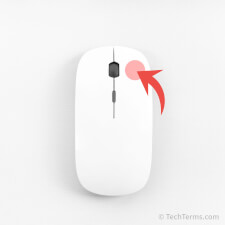Right-Click
Most computer mice have at least two buttons — the left mouse button is considered the primary button, and the right one is the secondary button. A right-click is the act of clicking the right mouse button and often triggers a secondary interaction like opening a contextual menu. A right-click is also known as a "secondary click."
Laptop touchpads, even those without physical buttons, also support right-clicking. Some touchpads have a pair of buttons below the touch surface that work just like mouse buttons; the left button is the primary button, and the right one is secondary. Touchpads without buttons, which allow you to click by pressing anywhere on the touchpad surface, let you right-click by either pressing with two fingers at the same time or sometimes by pressing in the lower-right corner of the touchpad. Windows and macOS both allow you to customize this behavior.
Right-clicking is often used to open contextual menus, which are pop-up menus that change contents depending on where and what you click. For example, if you right-click on your desktop, you may see a menu that includes options to change view settings and the desktop wallpaper; if you right-click on a folder instead, the menu would show options to open the folder or view its properties. Some programs, like video games, may use a right-click to perform other secondary functions. However, most programs use a right-click to open contextual menus that let you customize the selected tool or object.
 Test Your Knowledge
Test Your Knowledge